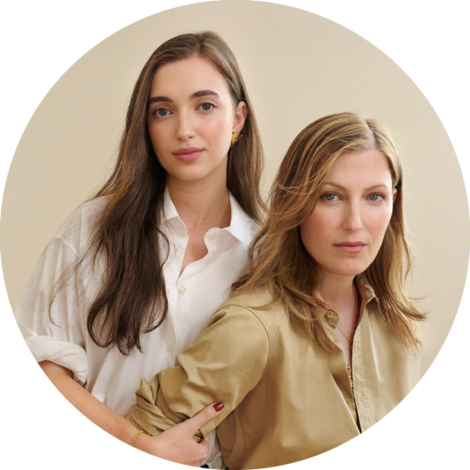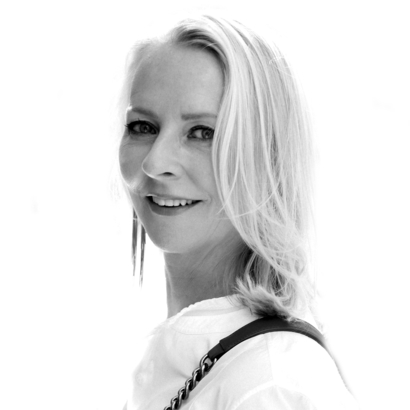You wouldn’t have known it to look at me, but for the 25 years that I attended the fashion shows in Paris, I was primped every morning at dawn by a hair-and-makeup team, or what’s referred to today as—eye roll—“glam.” I was not glam.
My employer, who footed this not insignificant bill, believed that the role of editor should be performed in a particular costume: full glam, designer clothes with the tags freshly snipped off, sky-high heels, and a car and driver. No argument from me, let me assure you. I loved greeting the hair-and-makeup team in my robe every morning, chatting with them over room-service cappuccino, and clip-clopping out of the hotel door ready for anything. I loved looking my best in a city that always looks its best. It felt appropriate. Respectful. But it was also a complete time suck, and I’m not sure I’ll ever recover from 25 years in stilettos.
When Pamela Anderson posed for the photographers at the fashion shows in Paris last week, she was not glam, either. (One thing in common!) But her approach was deliberate. Her face was almost entirely devoid of makeup, other than a few strokes of mascara and a layer of Orveda moisturizer. No blow-dryer or curling iron touched her pale-yellow hair. She plopped on a giant hat and was good to go. For someone who forged an identity out of artificial beauty, her decision to forgo it was a radical act.
“Am I worried about what people think, how I look?,” Anderson asks herself in a video for French Vogue. And then she answers: “This is the time for me to be … again, a little rebellious.” Not wearing makeup in public, it’s something we all do when we go for a run or a coffee. But not wearing makeup to the fashion shows in Paris when your name is Pamela Anderson? That’s rebellious.
In her “Get Ready with Me” video, there isn’t a whole lot of getting ready. Instead, Anderson talks to the camera about the choices she’s making now. “I didn’t come to Paris Fashion Week thinking, ‘I’m not going to wear any makeup.’ Something just kind of came over me.”
What came over her, and seems to have been driving her as seen in the 2019 documentary Pamela: A Love Story, is an apparent desire to depart from a lifetime as a cartoon pinup, a full-blown male fantasy shaped into a consumer product. “I’m not trying to be the prettiest girl in the room,” Anderson says in the video. In the sigh that follows, you can feel the toll that effort must have taken on her.
I’m not sure I’ll ever recover from 25 years in stilettos.
Anderson’s declaration, according to Jacque Lynn Foltyn, Ph.D., a professor of sociology at National University in San Diego, is “intentional rebranding. She’s trying to present herself as, I’m not packaged, I don’t have a handler, this is the authentic me,” Foltyn says. “She stood out in the crowd this way. If she’d worn makeup, she would have been one of many.”
In the video, Anderson, who’s 56, says, “You kind of have to challenge beauty sometimes. If we all chase youth or we’re chasing our idea of what beauty is in fashion magazines … we’re only going to be disappointed or maybe a little bit sad.” Going without makeup is her counterpunch.
There are echoes here of those tabloid “Stars Without Makeup!” stories. One such National Enquirer feature girds its readers for what they’re about to witness: “Take a look at brave stars … who dare to bare their unpainted faces while going out in public. But be warned: It’s NOT pretty!”
When women are exposed without makeup, it’s called brave. If they refuse Botox, cosmetic surgery, or even hair dye, they’re commended for aging gracefully. But, as the tabloid warns, it might not be pretty.
The tabloids seem to be accusing the women who are caught in the crosshairs of the paparazzi cameras of being tricksters. The implication is that, by wearing makeup, these women are fooling the public into believing they’re beautiful. By unmasking them, the tabloids take a self-righteous tone, as if they’re revealing these women’s true selves, warts, wrinkles, undereye circles, and all. Makeup is a tool of deception; beware of its charms.
Social media gave all those stars who were caught without makeup a chance to flip the script and gain agency over their own images. Rather than being butterflies pinned to a board, these women are posting #nomakeup selfies on Instagram as an expression of pride. Anderson, clear-eyed and calm as she looks directly at the camera, is also wresting control of her image, something that was stolen from her again and again throughout her career by the many men she trusted.
It’s no coincidence that Anderson is making this statement in her 50s, an age when women, according to conventional wisdom and Don Lemon, are so far past their prime that they become invisible. For all the hand-wringing and lament that goes with that invisibility, it also has its benefits. As fans of mythology, Harry Potter, and the Incredibles know, invisibility is a superpower and a source of strength. If you’re Pamela Anderson, you can take off your makeup and become invisible enough to wander around Paris in happy solitude. You can sit alone at a restaurant in the 11th Arrondissement without feeling self-conscious or pitiful. After a life of relentless scrutiny, invisibility offers Anderson an escape to freedom. She can become a private citizen, neither judged nor consumed—or at least judged and consumed on a smaller scale. “This whole celebrity culture is so much thought about, ‘Oh, everybody’s looking at me.’ When they’re not. They don’t care. They’re looking at themselves,” Anderson says in the video.
By vocalizing her decision, Anderson is, paradoxically, making “invisibility visible,” Foltyn tells me. “She’s claiming invisibility in a new way and saying, ‘I’m going to be a role model and change the narrative for all women by taking this mask of beauty off and showing you who I am.’ It’s aspirational.” Anderson is demonstrating how to revel in your invisibility, even though most of us who aren’t Pamela Anderson probably don’t need the lesson.
“Maybe one reason I do not wear makeup is to scare people,” writes Sharon Olds in her poem “No Makeup.” “In my small eyes, and my smooth withered skin, / you can see my heart, you can read my naked lips.” It sounds almost hopeful. You can hear that, too, in Anderson’s girlish voice and her sweet vulnerability.
“The most important thing is to remain joyful … and at peace with yourself,” Anderson says, reminding us as much as herself. “It’s just [sigh] freedom. It’s like a relief.”
Linda Wells is the Editor at Air Mail Look





